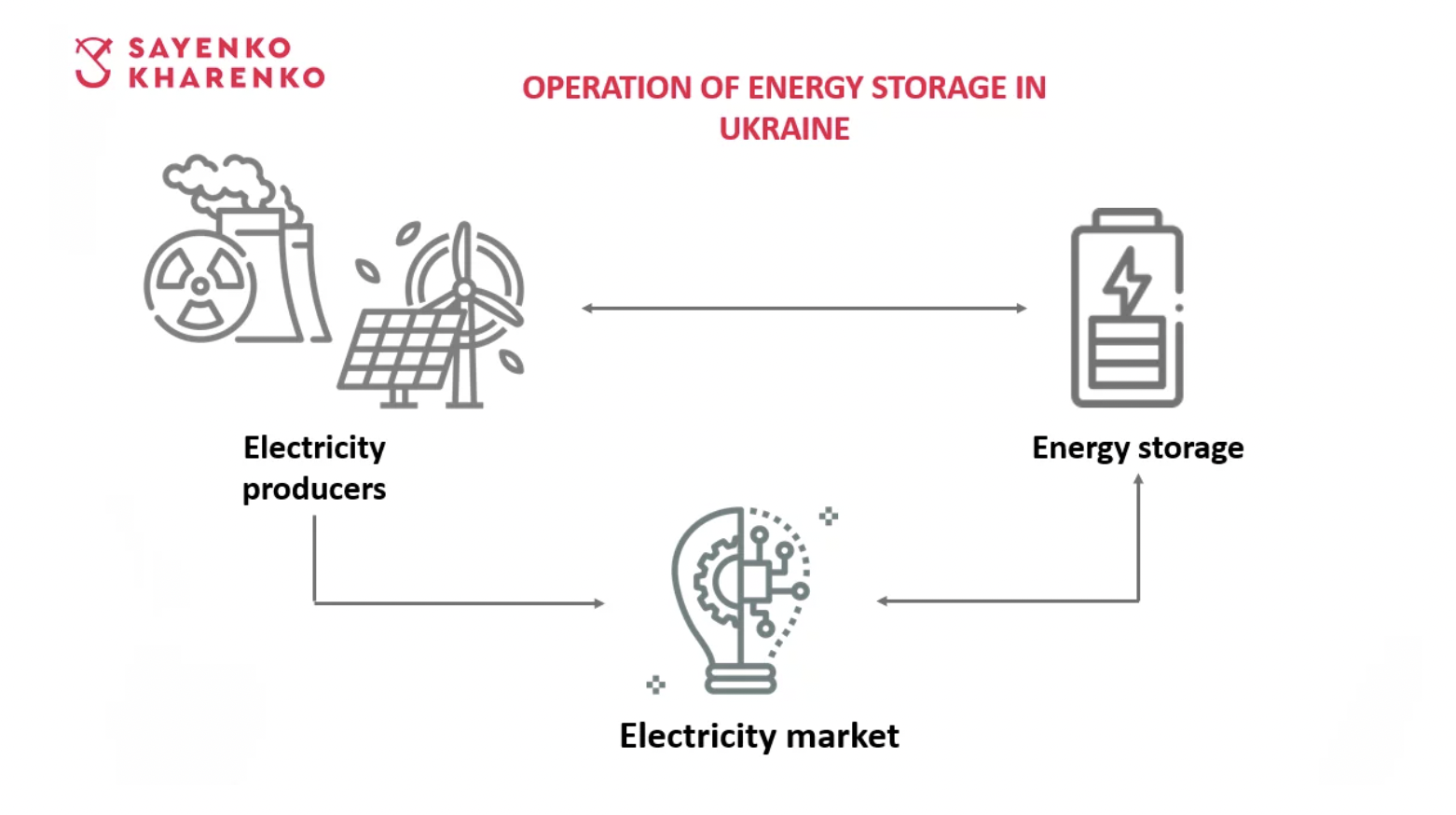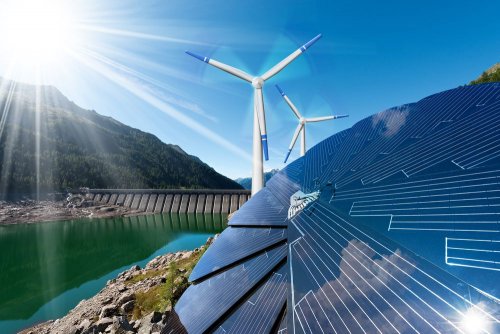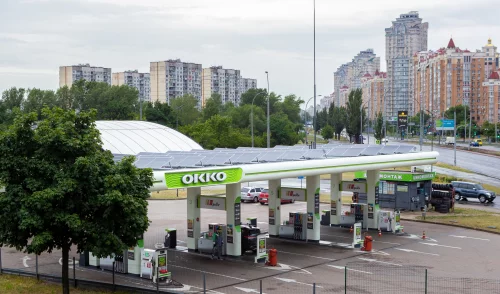The implementation of energy storage allows integrating more RES generation into the energy system. This technology is an essential tool for solving the problems of the security of electricity supply and operational security of the unified energy system of Ukraine and for implementation of the green energy transition of the state.
Energy storage is an important component of the energy system, as it provides an increase in its flexibility and ability to store surplus energy, reports Sayenko Kharenko.

Legislative regulation
On 15 April, the President signed the Law of Ukraine “On Amendments to Certain Laws of Ukraine on the Development of Energy Storage Facilities” No. 2046-IX (the “Law on the Development of Energy Storage Facilities”), adopted by the Verkhovna Rada of Ukraine on 15 February 2022. The Law enters into force two months after its publication, namely on 16 June 2022. It provides for amendments to the Laws of Ukraine “On the National Energy and Utilities Regulatory Commission” and “On the Electricity Market”.
Common provisions
- The energy storage facility is operated by an operator that is a new participant in the electricity market.
- Business activity on energy storage is carried out subject to obtaining a license, except in the following cases:
- An electricity producer may operate an energy storage facility without obtaining a license for energy storage business under the following conditions:
– operation is carried out at the place of licensed activities on electricity production,
– storage facility withdraws electricity exclusively from the generating facilities of the producer,
– at any time, the total output capacity of the electricity producer in the unified power system of Ukraine does not exceed the installed capacity of the electricity facilities of such a producer as set in its license on electricity production;
- If the installed capacity or the output of electricity of the storage facility is less than the indicators determined in the license conditions for business activities for energy storage (license conditions must be developed and approved by the Regulator – the NEURC);
- The consumer uses storage facility without output of previously stored energy to the unified power system of Ukraine or to the network of other business entities. Provision of services for charging electric vehicles at electric charging stations falls under such consumption.
- The operator of the energy storage facility is prohibited from carrying out activities on:
- transmission and distribution of electricity. Exceptions: TSOs and DSOs may operate energy storage facilities to prevent or recover from accidents in the power system (for TSOs) or to ensure the efficient, reliable and safe operation of the distribution system (for DSOs);
- transmission and distribution of gas;
- performing functions of the market operator and guaranteed buyer.
- The energy storage facility must be provided with separate commercial metering of electricity flow both to and from such an installation.
- The operator of the energy storage facility pays a service fee for:
- transmission of electricity
- distribution of electricity
- dispatching (operational and technological) management.
The fee is calculated based on the tariffs for such services and the amount of electricity, which is the difference between the monthly withdrawal and the monthly output of electricity by the facility.
Peculiarities for RES producers
- Under general conditions, if RES producer sells electricity at a feed-in tariff and when its generation is stopped at the command of the TSO, such a producer has the right to reimburse the cost of electricity which was not generated at a feed-in tariff. Suppose such RES producer has an energy storage facility. In that case, the amount of electricity that must be reimbursed to the producer is reduced by the amount of electricity withdrawn by the energy storage facility during the TSO command to reduce the load.
- If conditions for RES production and operating of energy storage facilities are met (the installed capacity does not exceed the one stipulated in the license and separate commercial electricity metering for the energy storage facility is established), the installation of such a facility is not a basis for reviewing the established feed-in tariff.
Network regulation
Equipment for storage (accumulation) of energy is subject to the general conditions and procedure for connecting to the transmission system provided for by the Transmission System Code, with the following features:
- when installing and connecting energy storage facilities, such connection must be made without increasing the installed capacity of the power facility to which connection is made;
- when connecting energy storage facilities, a design assignment is submitted for consideration to the TSO/DSO, in respect of which a reasonable answer must be provided by the TSO/DSO within up to 10 working days;
- energy storage facilities shall meet the requirements of the Transmission System Code.
The Transmission System Code establishes the types of energy storage facilities (А1, А2, B, C, D) depending on the voltage level of their connection point and maximum output capacity and also technical requirements for the respective types.
The Transmission System Code also defines requirements for participation of the energy storage facilities in ensuring operational security of the transmission system, operational planning of the transmission system, and provision of ancillary services to the TSO.
Assessment of the required capacities
The Report on assessment of conformity (sufficiency) of generating capacities – 2020 (the “Report”) of the transmission system operator (PJSC “NPC “Ukrenergo”) provides for the need to accelerate the implementation of electricity storage systems with a total capacity of up to 0.5 GW or even up to 2 GW, depending on the options for involving generation in regulation, which will provide the unified power system of Ukraine with the necessary regulation reserves to meet compliance requirements.
In addition, the Report outlines that introduction of facilities for accumulation and transfer of power from periods of the electricity load schedule, where there is a surplus, to periods where there is a deficit, solves the problem of long-term power surpluses.
The issue of approving the Report – 2021 was to be considered by the NEURC on 19 April 2022, but so far, there is no information about the approval.
Conclusion
In Ukraine, the regulation of energy storage (accumulation) systems necessary for the national unified power system has been introduced. Such regulation is a crucial step for the practical implementation and operation of technology that allows to increase the level of security in the power system, its flexibility and ensures the implementation of measures related to the performance of Ukraine’s climate obligations.
It will be recalled that President of Ukraine Volodymyr Zelensky signed a law on the development of energy storage systems.
As EcoPoliticа reported earlier, Kyiv residents told how the SES helped them survive the occupation.





